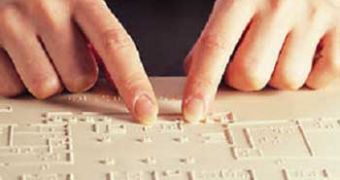A group of newly-graduated computer engineering students have unveiled a new computer prototype to help the visually-impaired users get full advantage of the digital world. Called the Ateneo Braille System, the device has entered beta-testing on March the 5th.
Named after the Ateneo de Manila University, the computer is the creation of a four-women team of developers and their faculty adviser. If the results are satisfying, the computer will enter mass-availability within the next year.
According to Tristan Calasanz, one of the engineers, the computer will be used to spread the Braille literacy among the persons with visual impairments. The upcoming computers will be extremely cheap, because the innovative system can be ported to older PCs, that are running at least on AT 286 processors.
The Ateneo computer has been developed by Giselle Mae Pacot, Karina Palileo, Clarisse Eileen Sabulao and Galilee Semblante as part of their partial fulfillment of requirements for the bachelor of science degrees in computer engineering. According to Calasanz, the research and development projects are faculty-driven, which means that the faculty staff suggest graduating students miscellaneous projects.
The project is hardly news, as it has initially been thought on paper since 2004. However, it was now that a group of students carried it to completion.
The device is based on touch, and the computer's keyboard can offer tactile feedback. The CRT and LCD monitors are also replaced with a special display, engineered using proprietary technologies, undisclosed yet. Ateneo Braille System will use open-source software at its core, while a proprietary program will take care of the Internet connection using a text-based Braille browser.
"The browser enables the blind to do all the good things people use the Internet for, such as sending and receiving e-mails, chatting, social networking, and surfing," claimed Calasanz. He added that the system also features other proprietary pieces of software, such as decoders and multiplexes. Moreover, the team of engineers plans to introduce voice recognition features as well.
Another bold project, called the Siafu is targeting at the same segment of visually-impaired computer users. However, it is still on the drawing board, while the Ateneo Braille System is close to completion.

 14 DAY TRIAL //
14 DAY TRIAL //